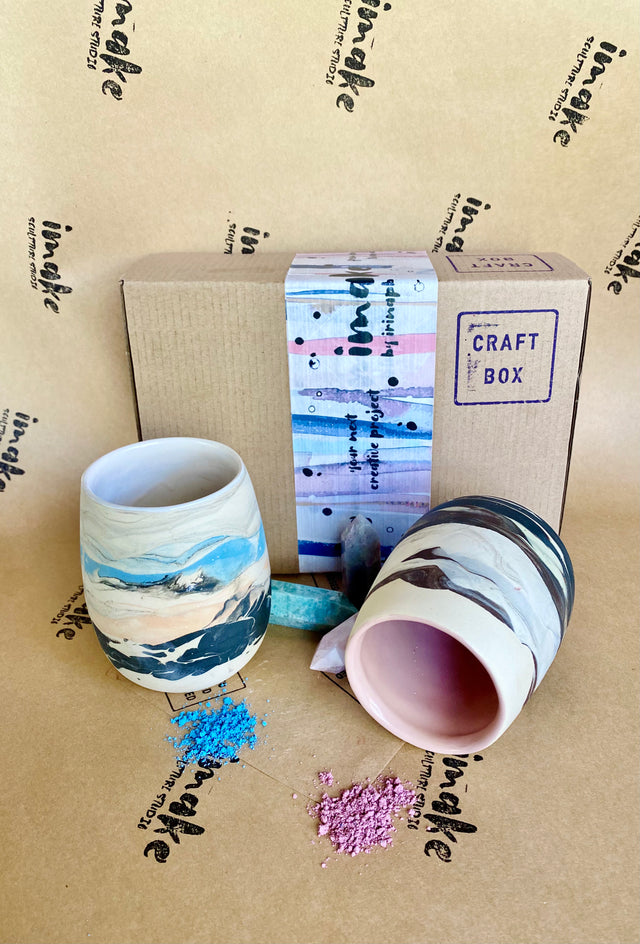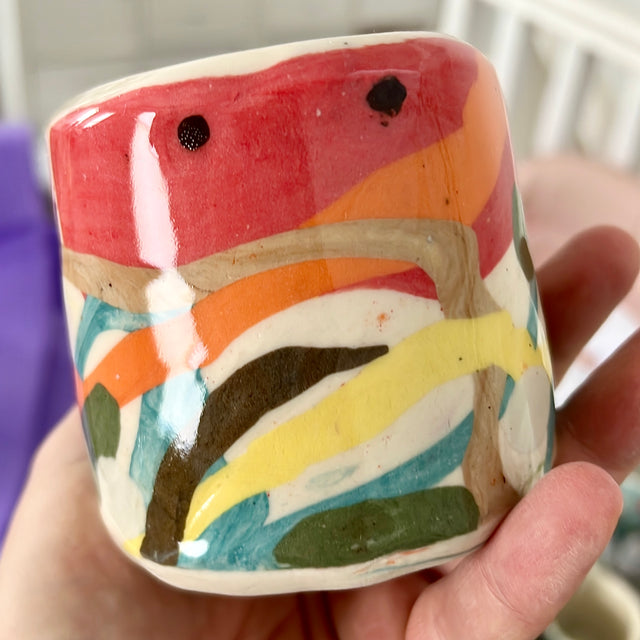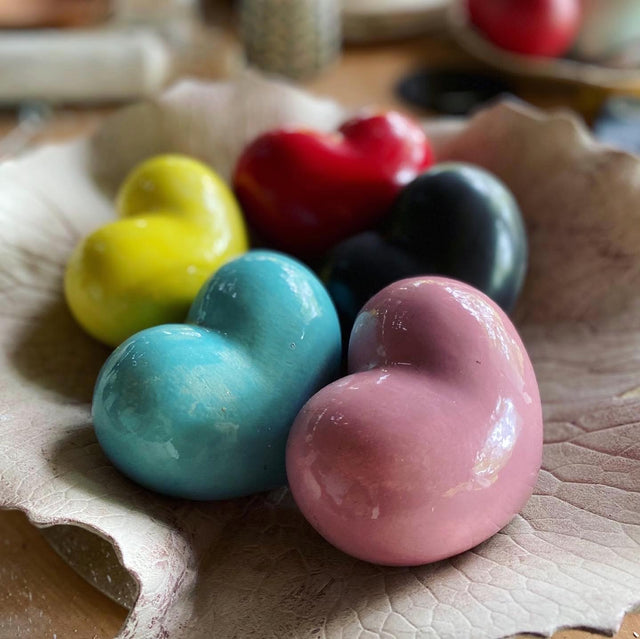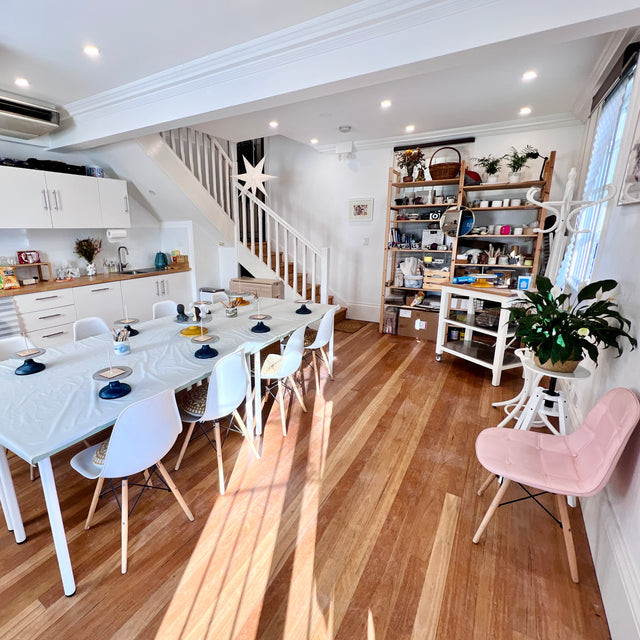






Firing and glazing 1 mug
Firing pottery can seem like a mysterious process with lots of technical terms that can sound quite foreign. So, I thought it would be helpful to publish an overview of the stages of firing clay. Here is a guide to the 3 stages of firing clay.
There are 3 main stages of firing clay. The first stage is the drying process.
Clay needs to be bone dry before it’s fired.
The second stage is bisque firing.
During the bisque fire soluble greenware clay is transformed into ceramic material.
The third stage is the glaze fire.
Once you have made your pottery, you need to let your clay dry out thoroughly before it’s fired. When clay is completely dry, it is called bone dry clay. This refers to when clay is as dry as it can be before it is fired.
It is important that your pottery dries out evenly. If one part of your pottery dries out quicker than another, the pottery is put under a lot of tension. This happens if the parts of your piece are uneven thickness and shape.
For example, a handle on a mug will tend to dry out quicker than the mug itself. This is because the handle is more exposed and has a larger surface area. If this happens, then there is a risk that the handle will crack at the join.
Once clay has been bisque fired, it has become ceramic. Because of the changes, it undergoes during firing, bisque pottery is hard but porous. That means that it will absorb water but won’t dissolve.
During bisque firing, clay starts a process of becoming mature. Clay is said to be mature when it is as dense and as hard as it can be. Some types of clay are able to become much denser and harder than others.
There are two main purposes of glazing pottery. The first is decorative. Glazing can give potter a range of colors, textures, and finishes. The second is functional. Glaze coats the pottery in a layer glassy layer that makes the pottery water-resistant and waterproof.
As the glaze dries on the pot a layer of the glaze materials adheres to the surface. Several layers of glaze normally need to be applied to a piece of bisqueware. Though the number of layers varies according to how it’s applied and the kind of glaze used.
Once the glaze has dried on the pot, it’s ready for its second firing. This is called the glaze fire, or sometimes glost firing. During the glaze fire, the ingredients in the glaze transform.
Some of the materials in glaze are known a glass-formers. Once they reach a certain temperature, they melt and form liquid glass. This liquid glass coats the pot, and as the kiln cools, the glaze hardens again to form a glazed surface.
Cancellation Policy
Classes and Courses are non-refundable in the case of cancellation but customers are able to reschedule for another time up to 1 day prior to event. Different Policy applies for private group bookings

